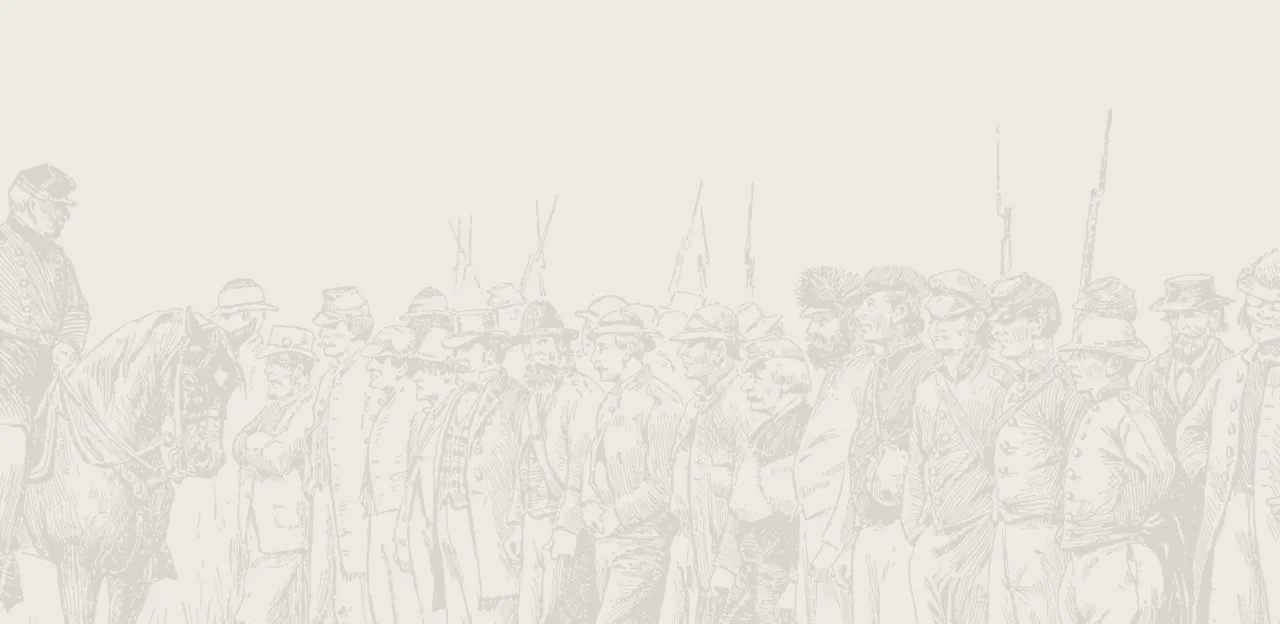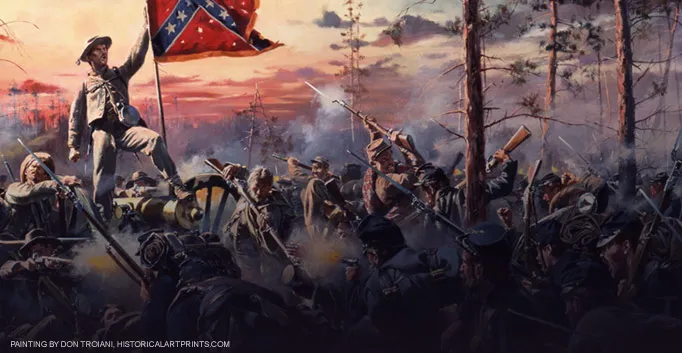Glendale

The Battle of Glendale
Frazier's Farm

After the defeat of the Union V Corps at Gaines’ Mill on June 27, 1862, Maj. Gen. George B. McClellan decided to abandon his campaign to capture Richmond. Moving his entire army south of the Chickahominy River had forced him to abandon his supply base at White House landing on the Pamunkey River. As he continued moving south and abandoned his supply depot at Savage’s Station to Gen. Robert E. Lee’s pursuing Confederates on June 29, McClellan also ceded the Richmond and York River Railroad to the Rebels. Without ammunition, food for his men or forage for his animals, McClellan was forced to seek the covering gunfire and resupply of the U. S. Navy vessels on the James River.
With the Army of the Potomac in full retreat, Lee intended to cut the Federal host in two by thrusting his 45,000-man army against the Yankees as they moved south along the roads. Lee planned for Maj. Gen. Thomas J. “Stonewall” Jackson's divisions to engage the Union rearguard at White Oak Swamp from the north. At the same time, the divisions of Maj. Gens. Benjamin Huger, James Longstreet and A. P. Hill would attack McClellan’s army at the crossroads near Glendale (known as Riddell’s Shop). Reaching ahead to the vanguard of the retreating Yankees near Malvern Hill would be the division of Maj. Gen. Theophilus Holmes. The division of Maj. Gen. John B. Magruder would support the Glendale attack or Holmes as needed.
Incredibly, McClellan would not be there to lead his beloved army in the battle. On the morning of June 30, the Young Napoleon boarded the gunboat USS Galena and spent the rest of the day completely cutoff from all communications. He left behind a leaderless force that occupied a patchwork defensive position stretching from White Oak Swamp to Malvern Hill. While moving along congested and unfamiliar roads, each corps and division commander posted his troops and fought the upcoming battle, in the words of one corps commander, "according to his own ideas."
On the Rebel side, poor communication, confusion, and lackluster performances among most of his generals threatened to sap Lee's attack of all its energy. Two divisions of Union infantry and six batteries under Brig. Gen. William Franklin guarded the army's northern flank along White Oak Swamp, preventing the uncharacteristically sluggish and cautious Jackson from contributing to the day's action. At the same time, Huger's division wasted hours cutting a new road through the thick woods and never participated in the fighting.
Shortly after 4:00 p.m., an impatient Lee ordered Longstreet's and Hill's divisions forward along the Long Bridge Road in the direction of Willis Church. The Southerners routed Brig. Gen. George McCall's Pennsylvania Reserve division, with the 47th Virginia Infantry capturing McCall himself. Longstreet and Hill fed in their brigades piecemeal, never mounting a coordinated assault. Disparate Union counterattacks by the III Corps divisions of Brig. Gens. Joseph Hooker and Phillip Kearny near the Frayser farm resulted in fierce hand-to-hand fighting and somehow managed to seal the breach, saving the Union line of retreat along the Willis Church Road. To the south, Holmes’ advance was slowed by Union artillery and navy gunboats on the James, while Magruder’s division spent the afternoon marching and supported no one. As the sun set over Glendale, the Army of the Potomac made its way to Malvern Hill.
Lee had lost his best chance to end the Union army's retreat. His army lost 3,600 men trying to take the crossroads and the Federals had lost around the same number men defending it. Longstreet and Hill fought the Yankees by themselves. "Could the other commands have cooperated in this action, the result would have proved most disastrous to the enemy," Lee wrote in his report of the battle.





